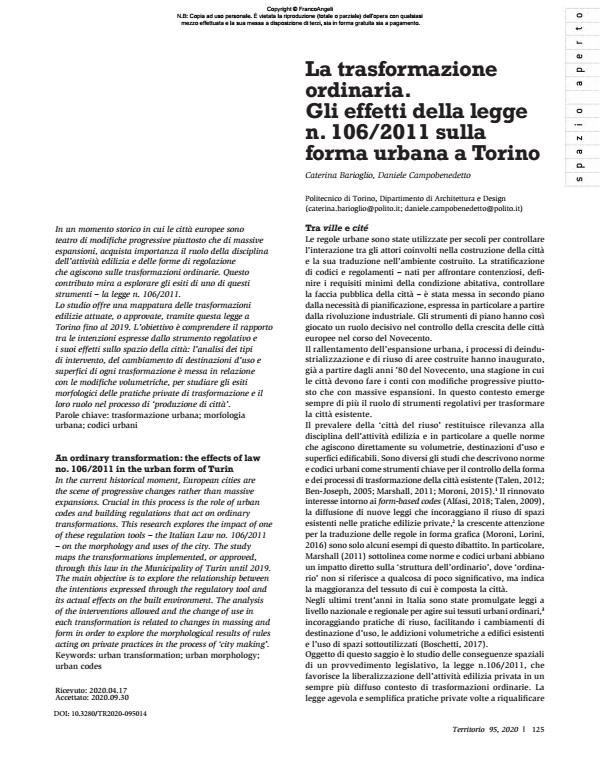An ordinary transformation: the effects of law no. 106/2011 in the urban form of Turin
Journal title TERRITORIO
Author/s Caterina Barioglio, Daniele Campobenedetto
Publishing Year 2021 Issue 2020/95
Language Italian Pages 10 P. 125-134 File size 1029 KB
DOI 10.3280/TR2020-095014
DOI is like a bar code for intellectual property: to have more infomation
click here
Below, you can see the article first page
If you want to buy this article in PDF format, you can do it, following the instructions to buy download credits

FrancoAngeli is member of Publishers International Linking Association, Inc (PILA), a not-for-profit association which run the CrossRef service enabling links to and from online scholarly content.
In the current historical moment, European cities are the scene of progressive changes rather than massive expansions. Crucial in this process is the role of urban codes and building regulations that act on ordinary transformations. This research explores the impact of one of these regulation tools - the Italian Law no. 106/2011 - on the morphology and uses of the city. The study maps the transformations implemented, or approved, through this law in the Municipality of Turin until 2019. The main objective is to explore the relationship between the intentions expressed through the regulatory tool and its actual effects on the built environment. The analysis of the interventions allowed and the change of use in each transformation is related to changes in massing and form in order to explore the morphological results of rules acting on private practices in the process of ‘city making’.
Keywords: Urban transformation; urban morphology; urban codes
Caterina Barioglio, Daniele Campobenedetto, La trasformazione ordinaria. Gli effetti della legge n. 106/2011 sulla forma urbana a Torino in "TERRITORIO" 95/2020, pp 125-134, DOI: 10.3280/TR2020-095014